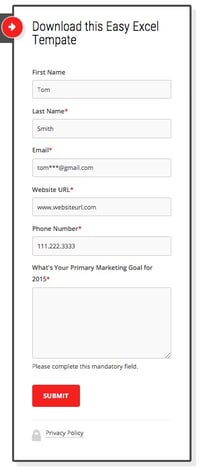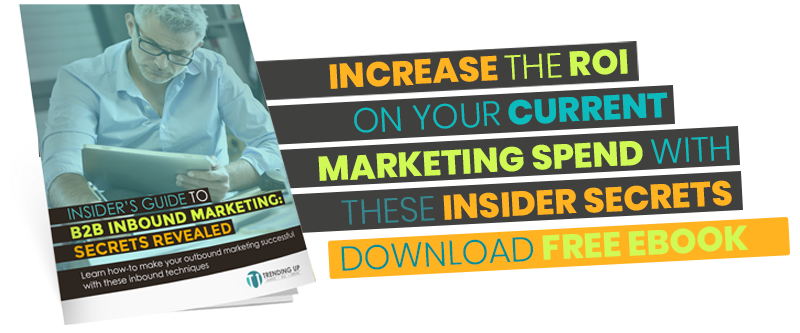Interactivity is crucial to inbound marketing. In a sense, every design choice in an inbound marketing campaign should be built around a desire to interact with your prospective customer. However, that’s still only one part of the story. Sometimes, it’s necessary to directly solicit data from your prospects. How?
 The interactive interface you need is a form: A section of a page that gathers information and provides a reward, such as an e-book, checklist, or whitepaper. In exchange for valuable content, the prospect trades their name, email address and, often, a few other pieces of personal information. These can be found on regular website pages, blog pages, but particularly on landing pages (the main job of which it is to trade information for a download).
The interactive interface you need is a form: A section of a page that gathers information and provides a reward, such as an e-book, checklist, or whitepaper. In exchange for valuable content, the prospect trades their name, email address and, often, a few other pieces of personal information. These can be found on regular website pages, blog pages, but particularly on landing pages (the main job of which it is to trade information for a download).
Those with a background in traditional marketing will recognize this all-important first exchange is crucial in building trust with a prospect. Forms help you gain insights into the habits and needs of your website visitors in other ways, too:
-
Qualifying leads quickly;
-
Clarifying your customer personas;
-
Learning about customers’ needs.
Forms are so crucial, 56% of marketers surveyed said optimizing form logic had a significant impact on conversion. Conversion means you have captured a stranger's information and changed them from a visiting stranger on your site into a lead that you now know who they are and what they are interested in.
Making adjustments to your forms can improve results instantly, serving to convert even more prospects. Forms that automatically change based on information you already received from a contact are called smart form fields and they react to past behavior by reading the user’s cookies. Smart forms automatically fill information in that is already known and leaves a blank with the information we have not yet received.
The Importance of Information Prospects Provide
Internet users are inundated with information collection they don’t desire or consent to; industry terminology reflects the coercive element, with experts referring to “information capture.”
 Inbound marketing takes a user-friendly approach with particular attention to what kind of offers and questions are right for prospects at the top of the funnel versus the bottom. At the top of the funnel, prospects are new to your brand and must enhance their awareness. Even so, they are more open to embracing your expertise than at any other time – if treated well. This is called permissions-based marketing.
Inbound marketing takes a user-friendly approach with particular attention to what kind of offers and questions are right for prospects at the top of the funnel versus the bottom. At the top of the funnel, prospects are new to your brand and must enhance their awareness. Even so, they are more open to embracing your expertise than at any other time – if treated well. This is called permissions-based marketing.
Top of the funnel offers include things like:
-
Educational e-Books answering general questions
-
Tip Sheets
-
Checklists
-
Educational Whitepapers
-
Informative Videos
At the bottom of the funnel, a brand’s standing is recognized – it’s time to overcome final objections and launch a buying relationship. Here, the questions asked by your form can be more robust and probing without causing a prospect to abandon you. At the top of the funnel, be precise and circumspect about the data you hope to collect. At the bottom, be bolder: You may never have a better chance to gather key demographic information!
For more information on how you can utilize inbound marketing techniques on your site, check out our Insider's Guide to B2B Inbound Marketing.
Check out related blog topics:






